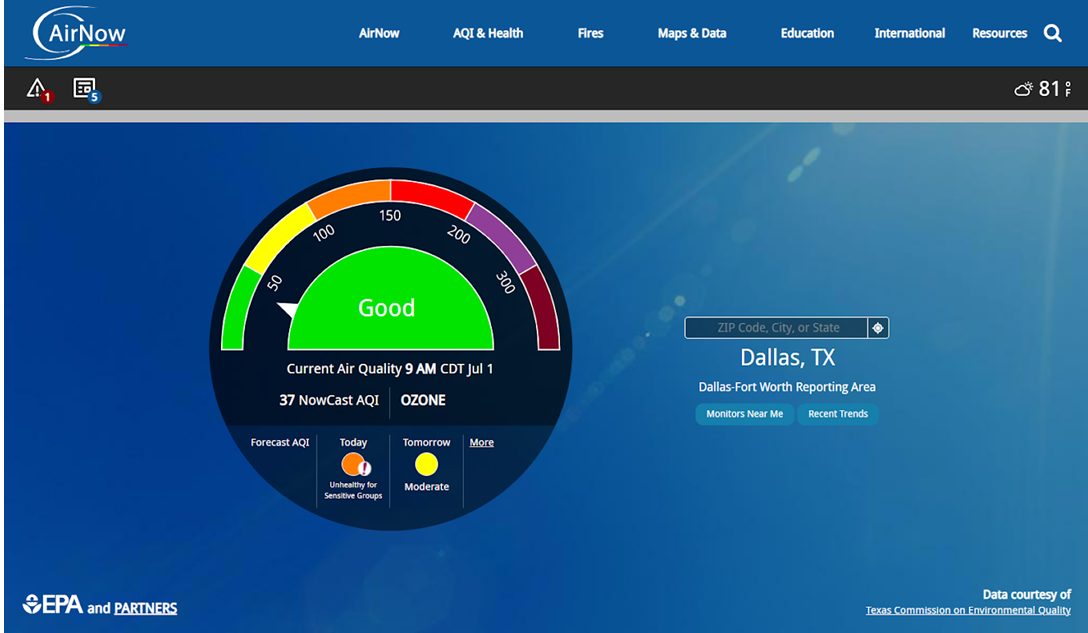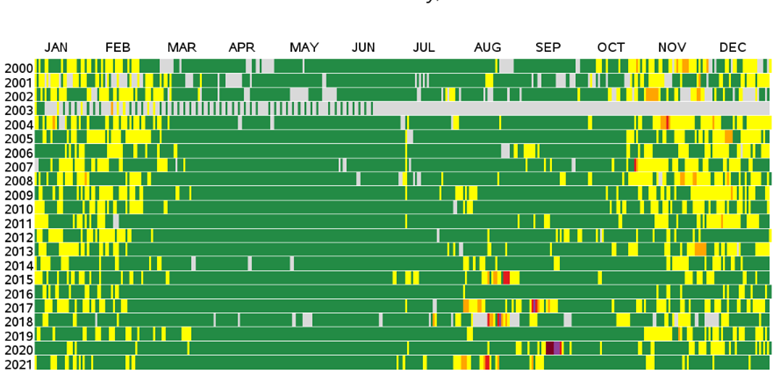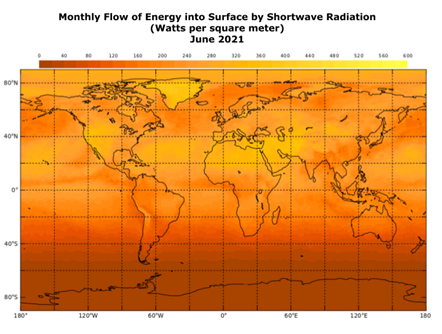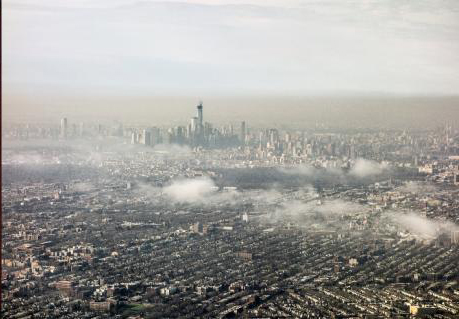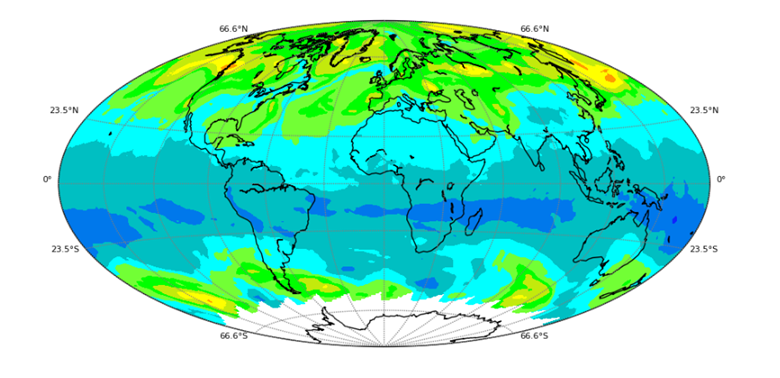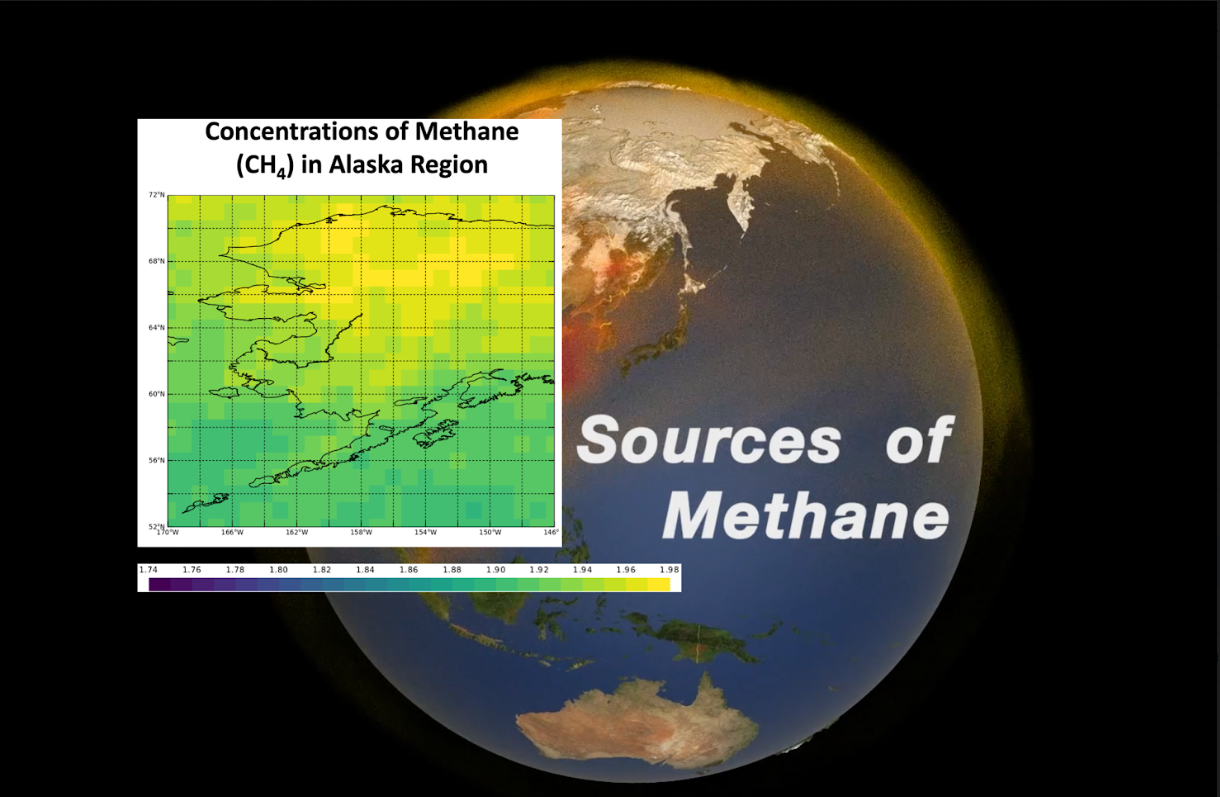Use the AirNow.gov website to determine current air quality in US locations, as well as other information.
List of all Atmosphere Mini Lessons




The Great Smoky Mountains have a unique climate and weather pattern. Students will review a Landsat image and read about the history of the area and why Native Americans called the area “Shaconage.” Then they will answer the questions about what caused the unusual “blue smoke.”
Using hourly graphs of PM 2.5 data and HYSPLIT model trajectories, students will collect evidence for the effects of fireworks on air quality.
Students observe how air quality changes over time, for a selected location, using data from the United States Environmental Protection Agency (EPA).
Students differentiate between data sets of monthly shortwave radiation and monthly cloud coverage to discover a relationship between radiation and clouds by answering analysis questions.
Students will synthesize information from maps that show population, concentrations of PM2.5, and PM2.5-attributable mortality across the globe in order to draw conclusions about the relationship between particulate pollution and human health.
Students review different maps of wind trajectories to determine to origins of mud-laden rain in the Pacific Northwest.
Students analyze the data and details of a complicated graph by identifying components and data patterns.
Students watch a short video to gather information about sources of methane emissions and then extend their understanding of these sources to evaluate monthly trends in the Alaska region, ultimately making connections to Earth’s energy budget.
By investigating the data presented in a model that displays extreme summer air temperatures, students explain energy transfer in the Earth system and consider the impact of excessive heat on local communities.






